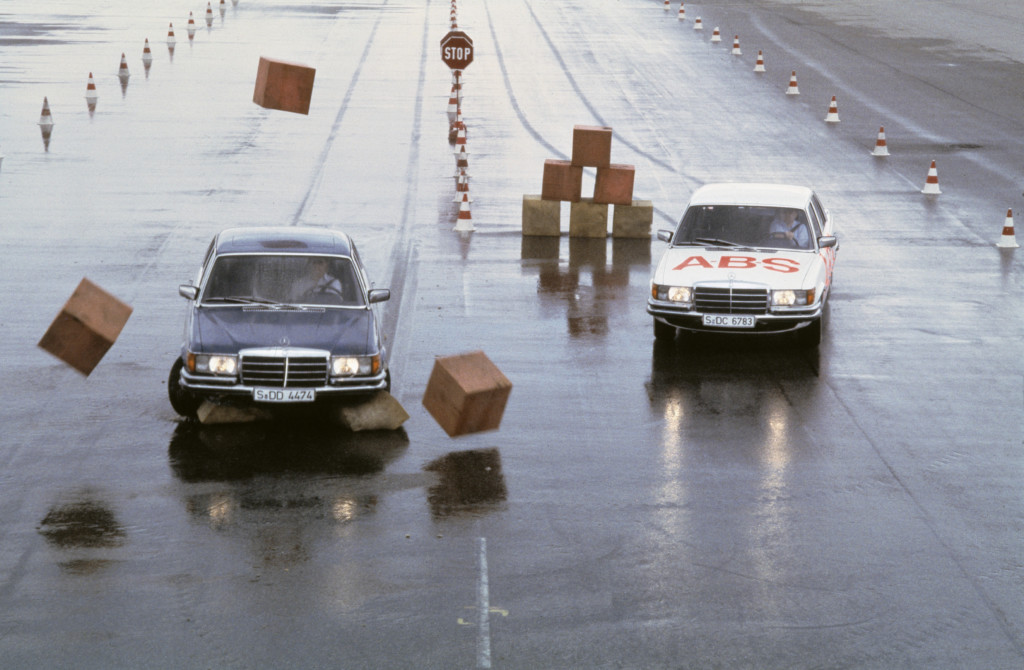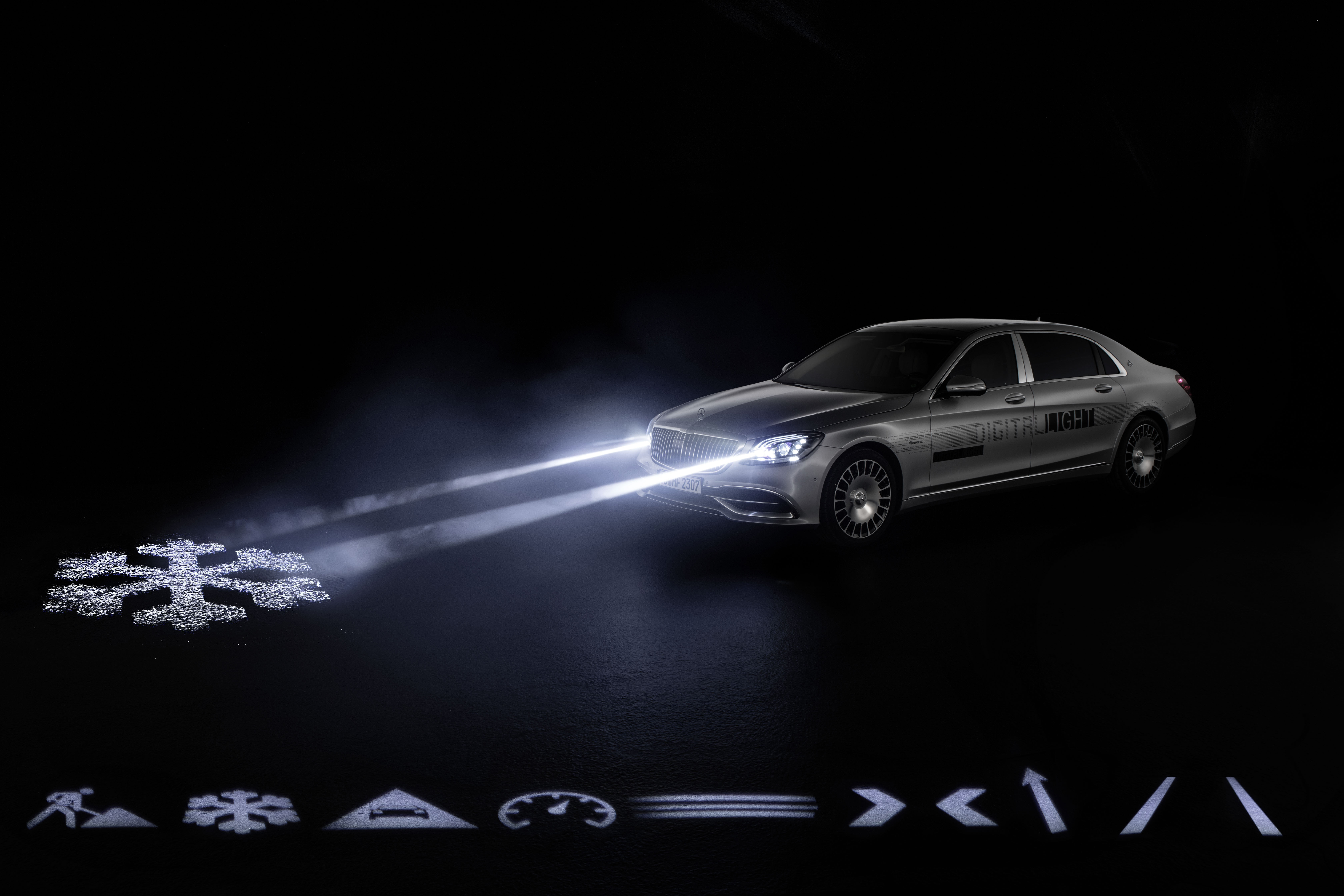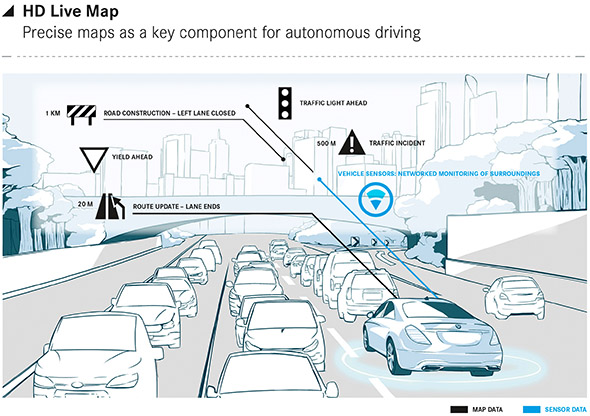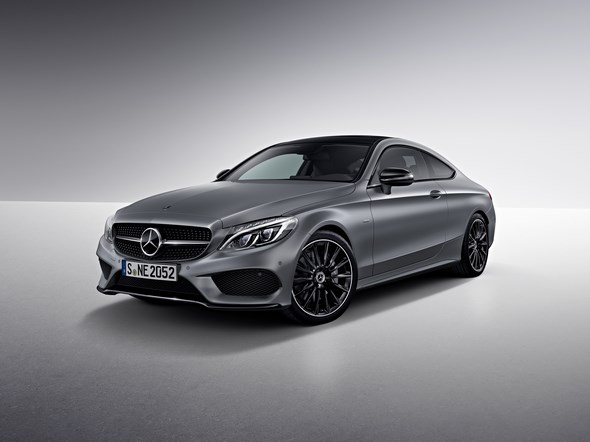Distronic/Distronic PLUS

DISTRONIC PLUS/Brake Assist PLUS: Radar-based assistance systems can prevent 20 percent of all head-to-tail crashes
DISTRONIC PLUS and Brake Assist PLUS – Mercedes assistance systems based on sophisticated radar technology – are highly effective at helping to prevent accidents.
This is one of the findings of an analysis carried out by Mercedes-Benz based on representative accident-research data.
This technology can prevent a fifth of all head-to-tail crashes in Germany alone. On motorways, the accident rate can be reduced by as much as around 36 percent.
[adsense]Mercedes-Benz has further enhanced the radar technology for the new E-Class and the model year 2009 S-Class.
Every year in Germany there are over 50,000 serious head-to-tail crashes, in which some 5700 people are either killed or seriously injured.
One in six traffic accidents in which people are injured is down to a head-to-tail crash. The situation is even more serious in the US, where this type of collision accounts for around 30 percent of all serious road accidents.
In developing the DISTRONIC PLUS and Brake Assist PLUSradar-based assistance systems, which have been available for the S-Class since 2005 and the CL-Class since 2006, Mercedes-Benz has made an important contribution towards preventing head-to-tail crashes.
This is one of the findings of the latest accident research carried out at Mercedes, based on the reconstruction of over 800 head-to-tail crashes.
The representative study focussed on one question in particular: how many accidents of this type could be prevented if all passenger cars were equipped with this Mercedes technology?
The results confirm the considerable safety-enhancing effect of the assistance systems: DISTRONIC PLUS and Brake Assist PLUS prevent over 20 percent of head-to-tail crashes on average.
In another quarter of these collisions, the systems can help to greatly reduce accident severity.
This combination of state-of-the-art radar and brake technology offers the greatest safety potential on motorways, where around 36 percent of all head-to-tail crashes can be prevented.
Warns and assists the driver as well as providing emergency braking
DISTRONIC PLUS proximity control operates at speeds of between 0 and 200 km/h: it keeps the car a set distance behind the vehicle in front, applies the brakes as required and can even bring the car to a complete halt, depending on the traffic situation.
If the gap to the vehicle in front narrows too quickly, the system gives the driver an audible warning and, as soon as this first warning signal sounds, automatically calculates the brake pressure required to prevent a collision in this situation.
This technology helps the driver to gauge the level of risk and makes the calculated brake boosting force available instantly, even if the driver does not press the brake pedal forcefully enough.
Brake Assist PLUS allows controlled, targeted braking and, if necessary, increases the braking force right up to the point at which an emergency stop is performed, depending on the road speed and the distance to the vehicle in front.
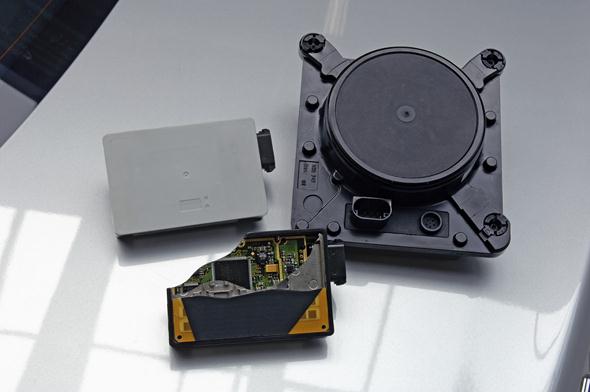
New radar sensor with extended range and medium-range detection capability
When a potential accident situation is recognised, assistance is provided courtesy of two short-range radar sensors behind the front bumper and a long-range radar in the radiator grille. Mercedes-Benz has further enhanced the performance capability of these sensors.
In the new E-Class and model year 2009 S-Class, Mercedes-Benz uses a newly developed sensor with a range of 200 metres – instead of 150 metres, as previously – for the long-range radar.
[adsense]In addition, the sensor now also has medium-range detection capability, allowing monitoring of the area up to around 60 metres ahead of the car with a 60-degree beam width.
This new technology enables even more precise monitoring of the traffic situation in front of the car and even better detection of dynamic events such as a car in front swerving suddenly.
The two wide-beam short-range radar sensors (80 degree beam width) with a range of around 30 metres are still employed.
40 percent of all S-Class saloons are equipped with radar
Mercedes-Benz offers DISTRONIC PLUS in combination with Brake Assist PLUS as an optional extra.
Around 40 percent of customers buying new S-Class models in Germany specify this safety technology; in the case of the CL-Class, over 70 percent of customers order DISTRONIC PLUS and Brake Assist PLUS. Since 2005, Mercedes-Benz has supplied customers with over 50,000 cars featuring these innovative systems.
I guess you are referring to later European cars that also brake with Brake Assist Plus when it detects a stationary object which your are likely to collide with.
Early Euro cars only give an audible and visible warning while later cars also apply brakes if the driver does not react.
This is one of the safety features we expected for the first cars and to me it is a real shame that MB did not activate this for the older cars (because it was clearly only activated once they got it up and running well enough).
I’m still a bit puzzled if the BAS+ too only works at speeds above 30 km/h. The scenario where I would see this most useful is at cross-roads when you are looking at the traffic from the crossing road and the car in front of you suddenly stops when you expect there being good space for it to enter the other road while you give one more check at the crossing traffic.
Perhaps Parktronic+ is sufficient there too, it would give an early warning about a possible collision a lot further away than the standard Parktronic feature (again not sure about the speed where this Parktronic+ feature activates).

The autonomous car braking feature is described below, at the very end of the quote form the on-line manual.
PRE-SAFE® Brake* (vehicles with Distronic Plus*)
PRE-SAFE® Brake can help you to minimise the risk of a frontal collision with a vehicle ahead or reduce the effects of such a collision.
This function will issue a warning at speeds of around 30 km/h or more if:
- For a period of several seconds, the distance to the vehicle in front is too short for the speed at which you are travelling. The distance warning lamp in the instrument cluster will then light up
- You are approaching the vehicle in front too rapidly. An intermittent warning tone will then sound and the distance warning lamp will light up in the instrument cluster.
- Risk of accident Pay particular attention to the traffic conditions if the distance warning lamp in the instrument cluster lights up or an intermittent warning tone sounds. If necessary, brake or swerve to avoid an obstacle.
In addition, at speeds of around 30 km/h or more, PRE-SAFE® brake can:
- Brake the vehicle gently and automatically within a speed range of up to around 180 km/h
- Trigger preventative passenger protection measures (PRE-SAFE®)
Risk of accident PRE-SAFE® Brake is only an aid to assist you when driving. You are responsible for maintaining a safe distance from other vehicles, the vehicle’s speed and for braking in good time.
Always pay attention to the traffic conditions. You may otherwise recognise dangers too late, cause an accident and injure yourself and others.
With the help of the radar sensor system, PRE-SAFE® Brake detects obstacles that are in front of your vehicle for an extended period of time.
If you approach an obstacle and PRE-SAFE® Brake detects a risk of a collision, the system will initially alert you both visually and acoustically.
If you yourself do not brake or steer, the vehicle will automatically brake slightly. In cases of increased risk of a collision, PRE-SAFE® is activated

Mercedes Distronic is an intelligent cruisecontrol which is being sold as a Mercedesoption. Many people have asked me how does it work and does it work as announced.
I have had the opportunity to test out a S500L equipped with the Distronic system and I can give you a couple of answers, YES it does work and YES it works as is announced.
The Distronic works almost as a standard Mercedes cruise control (Tempomat) but it is also working with a radar integrated in the cars grille constantly measuring the distance between your car and the one in front of you.
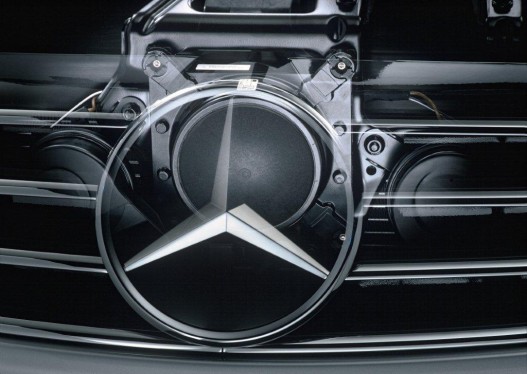
Example you set the Cruise at 90km/h, some car cuts you off doing 70km/h the distronic sense the obstacle in front of you and adjusts the speed accordingly, it even brakes the speed down if neccesary the Distronic have access to 20% of the brakes potentional and can save many situations but its not idiot proof.
Laser-based systems are significantly lower in cost than radar-based systems; however, laser-based ACC systems do not detect and track vehicles well in adverse weather conditions nor do they track extremely dirty (non-reflective) vehicles very well.
Laser-based sensors must be exposed, the sensor (a fairly-large black box) is typically found in the lower grille offset to one side of the vehicle.
Radar-based sensors can be hidden behind plastic fascias; however, the fascias typically looks different from a vehicle without the feature.
For example, Mercedes packages the radar behind the upper grille in the center; however, the Mercedes grille on such applications contains a solid plastic panel in front of the radar with painted slats to simulate the slats on the rest of the grille.
Source: wikipedia
Distronic Plus was introduced by MB on the 2007 S-class. One of the main improvements of Distronics Plus over the Distronics 1.0 is that it works down to a full stop.
The original Distronics 1.0 would disconnect automatically under a minimum speed 40 KMH or less.
It allows Distronics Plus to be used in heavy traffic areas and stop and go situations. In general, it also has been improved to operate more reliably than the previous generation (for example: better tracking obstacles/vehicles ahead when car is in Hway curves).
[adsense]Distronics Plus now also incorporates a radar function for Parktronics so that the funny plugs on the bumpers are no longer required on cars so equipped.
It also improves safety via advances in prepping car (tightening seat belts, positioning of seat and headrest, etc) as radar anticipates a possible impending crash.
On the later ’08 and ’09 models, Distronics Plus has been expanded to incorporate capabilities related to Blind Spot and advanced Park Assist.
As far as the negative side of this advanced radar based system, Distronics Plus uses an extended wave length band that interferes with the use of radar detectors to the point of making them worthless (that plus the special coating of the windshield and other glass of car). Distronics 1.0 did not interfere with radar detectors.
This is all from my fuzzy memory after loads of turkey and not inconsequential quantities of fine Pinot Noir. Hope others have more technical information on the subject matter.
Source: Z356

DISTRONIC PLUS/Brake Assist PLUS: Radar-based assistance systems can prevent 20 percent of all head-to-tail crashes
DISTRONIC PLUS and Brake Assist PLUS – Mercedes assistance systems based on sophisticated radar technology – are highly effective at helping to prevent accidents.
This is one of the findings of an analysis carried out by Mercedes-Benz based on representative accident-research data. This technology can prevent a fifth of all head-to-tail crashes in Germany alone.
On motorways, the accident rate can be reduced by as much as around 36 percent. Mercedes-Benz has further enhanced the radar technology for the new E-Class and the model year 2009 S-Class.

Every year in Germany there are over 50,000 serious head-to-tail crashes, in which some 5700 people are either killed or seriously injured.
One in six traffic accidents in which people are injured is down to a head-to-tail crash. The situation is even more serious in the US, where this type of collision accounts for around 30 percent of all serious road accidents.
In developing the DISTRONIC PLUS and Brake Assist PLUSradar-based assistance systems, which have been available for the S-Class since 2005 and the CL-Class since 2006, Mercedes-Benz has made an important contribution towards preventing head-to-tail crashes.
This is one of the findings of the latest accident research carried out at Mercedes, based on the reconstruction of over 800 head-to-tail crashes.
The representative study focussed on one question in particular: how many accidents of this type could be prevented if all passenger cars were equipped with this Mercedes technology?

The results confirm the considerable safety-enhancing effect of the assistance systems: DISTRONIC PLUS and Brake Assist PLUS prevent over 20 percent of head-to-tail crashes on average.
In another quarter of these collisions, the systems can help to greatly reduce accident severity.
This combination of state-of-the-art radar and brake technology offers the greatest safety potential on motorways, where around 36 percent of all head-to-tail crashes can be prevented.
Warns and assists the driver as well as providing emergency braking

DISTRONIC PLUS proximity control operates at speeds of between 0 and 200 km/h: it keeps the car a set distance behind the vehicle in front, applies the brakes as required and can even bring the car to a complete halt, depending on the traffic situation.
If the gap to the vehicle in front narrows too quickly, the system gives the driver an audible warning and, as soon as this first warning signal sounds, automatically calculates the brake pressure required to prevent a collision in this situation.

This technology helps the driver to gauge the level of risk and makes the calculated brake boosting force available instantly, even if the driver does not press the brake pedal forcefully enough.
Brake Assist PLUS allows controlled, targeted braking and, if necessary, increases the braking force right up to the point at which an emergency stop is performed, depending on the road speed and the distance to the vehicle in front.
New radar sensor with extended range and medium-range detection capability
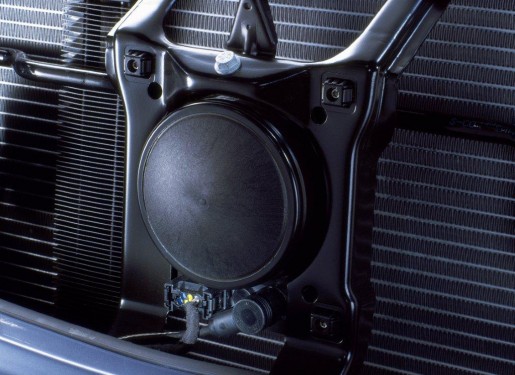
When a potential accident situation is recognised, assistance is provided courtesy of two short-range radar sensors behind the front bumper and a long-range radar in the radiator grille. Mercedes-Benz has further enhanced the performance capability of these sensors.
In the new E-Class and model year 2009 S-Class, Mercedes-Benz uses a newly developed sensor with a range of 200 metres – instead of 150 metres, as previously – for the long-range radar.
In addition, the sensor now also has medium-range detection capability, allowing monitoring of the area up to around 60 metres ahead of the car with a 60-degree beam width.
This new technology enables even more precise monitoring of the traffic situation in front of the car and even better detection of dynamic events such as a car in front swerving suddenly.
The two wide-beam short-range radar sensors (80 degree beam width) with a range of around 30 metres are still employed.
40 percent of all S-Class saloons are equipped with radar

Mercedes-Benz offers DISTRONIC PLUS in combination with Brake Assist PLUS as an optional extra.
Around 40 percent of customers buying new S-Class models in Germany specify this safety technology; in the case of the CL-Class, over 70 percent of customers order DISTRONIC PLUS and Brake Assist PLUS. Since 2005, Mercedes-Benz has supplied customers with over 50,000 cars featuring these innovative systems.







